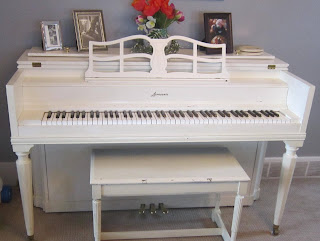
I’m teaching a course on the
U.S. Peace Corps at Lourdes University this fall, for its Lifelong Learning Program, so
I’m doing some research and reading.
I just finished Mark K. Shriver’s
A
Good Man (Henry Holt, 2012),
his adoring biography of his father Sargent Shriver, the first director of the
Peace Corps.
It perfectly complements
another book I’m reading, given to me as a gift by my cousin Kathy Curro (the
same cousin who gave me the gift of Mary Oliver’s poems): Parker J. Palmer’s Healing
the Heart of Democracy: THE COURAGE TO CREATE A POLITICS WORTHY OF THE HUMAN
SPIRIT (Jossey-Bass 2011).
Sargent Shriver had that
courage in spades, as his son tells us.
A man of deep faith, Shriver was the best first director
the fledgling Peace Corps could have had.
President John Kennedy picked the right man for the job, no doubt about
it. Shriver never lost his faith in the
Peace Corps’ purpose and promise, almost a religious devotion without end. Peace Corps, for Shriver and the many
volunteers he nurtured, in Africa, Southeast Asia, South America
Sargent Shriver and Parker Palmer
represent a convergence of kindred spirits and shared beliefs, a precious flash of hope in our often
harsh, mean-spirited, and conflicted world.
It’s a convergence I discovered by accident, serendipity, because I care
about Peace Corps and the future of our democracy, and about teaching, and
because I have wonderful cousins and family and friends who do, too.
Palmer closes his book with a
quote from the theologian Reinhold Niebuhr, another kindred spirit, one of many
that Palmer shares with us:
“Nothing
that is worth doing can be achieved in our lifetime; therefore, we must be
saved by hope. Nothing which is true or
beautiful or good makes complete sense in any immediate context of history;
therefore, we must be saved by faith. Nothing
we do, however virtuous, can be accomplished alone; therefore we are saved by
love.”
It’s a philosophy of life that could
have been written, and indeed something like it was written, by Sargent Shriver,
before and after the Peace Corps became a reality: “I believe in faith, hope, and love,” Shriver
wrote. “I believe that they have power.”
For Sargent Shriver, the Peace
Corps was a testament to that power.
Rising above the cacophonous
sounds of contemporary politics, the voices of Shriver, Parker Palmer, and Reinhold
Niebuhr give us hope for a future rooted in compassion. Change toward a just and equitable society and peaceful relations in the world, may not happen in our lifetime, but it will happen in time. To me that's what Peace Corps and the convergence of kindred spirits is all about.


.jpg)






.jpg)





